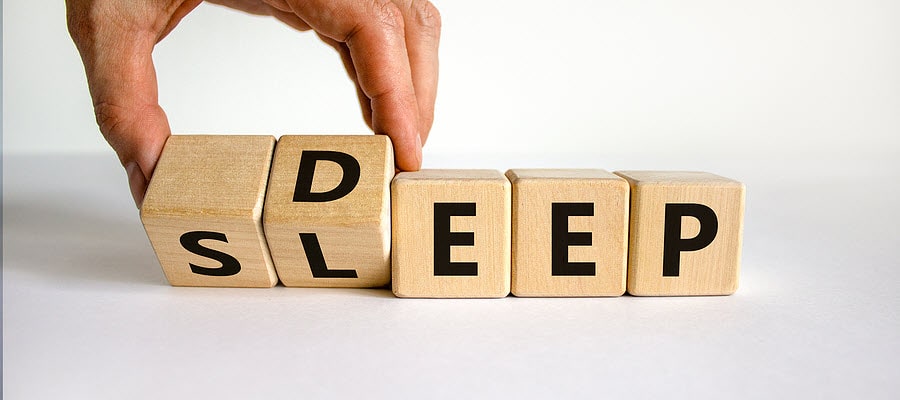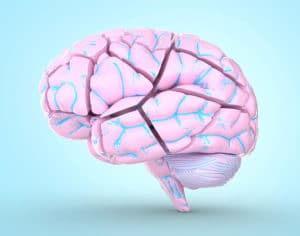Table of Contents
Magnolia Bark (Magnolia officinalis, Magnoliae cortex, Houpo, Chua houpu) has been traditionally used in Chinese and Japanese medicine for the treatment of depression, anxiety, neurosis, and related neurological disorders.
Clinical research in the last couple of decades demonstrate how Magnolia Bark as a nootropic supplement can be so effective for taking care of what our ancestors already knew. By reducing anxiety, depression, pain, symptoms of epilepsy, and other neurocognitive disorders including Alzheimer’s.
The polyphenols found in Magnolia Bark include magnolol and honokiol which provide its nootropic benefits.
As a nootropic, Magnolia Bark is used primarily to lower stress and promote a good night’s sleep.
Magnolia Bark helps:
- The Magnolia Bark compound honokiol appears to be as effective as diazepam for relieving anxiety with fewer side effects.
- Magnolia Bark interacts with the adenosine A1 receptor, dopamine transporter, dopamine D5 receptor (antagonist), serotonin receptors 5-HT1B and 5-HT6 (antagonist), GABAA receptors, hippocampus acetylcholine release, and modulates serotonin activity.[i] And is an acetylcholinesterase (AChE) inhibitor.[ii]
- The compounds honokiol and magnolol found in Magnolia Bark have been shown to significantly decrease β-amyloid (Aβ)-induced neuronal death associated with Alzheimer’s Disease.[iii]
Overview
Magnolia Bark (Magnolia officinalis) comes from the Magnolia tree originally found in Southeast Asia, Eastern North America, Central America and the Himalayas. Its flowers are fragrant with white petals.[iv]

Magnolia Bark was first recorded in the “Shennong Herbal Classic” from the Qin and Han Dynasty around 221 B.C. to 220 A.D. It was used to anxiety, asthma, depression, gastrointestinal disorders, headache, and more.[v]
More than 250 different chemical compounds have been identified in the flowers, bark, and leaves of the Magnolia. But most of its therapeutic potential comes from the bark and roots.
The Magnolia bud is almost exclusively used to treat sinus congestion and sinus headache.[vi]
Magnolia Bark is harvested in the spring from April to June. The root and branch bark are boiled in water and set aside until it turns a purplish brown color. This concoction is then steamed, rolled and dried.
Early chemical studies identified two main active ingredients in the Magnolia Bark: magnolol and honokiol. These neolignanes are the main active components providing its nootropic benefit. [vii]
Other bioactive compounds from Magnolia Bark are the alkaloids benzyl-tetrahydroisoquinoline and aporphine which are found in the leaves, branches and bark. These alkaloids may also have antispasmodic and muscle relaxant benefits.[viii]
Magnolia Bark has been traditionally used to treat diabetes, atherosclerosis, Alzheimer’s disease, gastrointestinal disorders, asthma, and microbial infections.
Studies in human cells indicate a growth inhibitor effect of honokiol and magnolol on human melanoma and carcinoma cells. There is increased interest in developing a novel analogue for chemotherapy derived from Magnolia Bark.[ix]
 How does Magnolia Bark work in the brain?
How does Magnolia Bark work in the brain?
Magnolia Bark boosts brain health and function in several ways. But two in particular stand out.
- Magnolia Bark is anti-anxiety. Magnolia Bark is known for its anti-anxiety benefits as an alternative to benzodiazepines.[x]
Honokiol found in Magnolia Bark has been shown to act on the GABAA receptor subunit α-2 which provides some of its anti-anxiety benefits.[xi]
- Magnolia Bark as an antidepressant. Main-stream psychiatric medicine often treats depression using SSRI’s. Which affects serotonin reuptake in the brain.
Traditional Chinese medicine uses Magnolia Bark to treat depression instead. Studies have demonstrated the honokiol and magnolol found in Magnolia Bark help prevent decreases in serotonin in the frontal cortex, hippocampus, striatum, hypothalamus, and nucleus accumbens.
The combination of honokiol and magnolol also normalize hypothalamic-pituitary-adrenal (HPA) hyperactivity. And induce reductions in platelet activity by upregulating the cAMP pathway.
The results of these studies show how Magnolia Bark provides its potent anti-depressant benefits.[xii]
There is also growing evidence that inflammation in the brain contributes to depression. Here again, Magnolia Bark has been shown to significantly reduce levels of pro-inflammatory cytokines; tumor necrosis factor α (TNF-α), interleukin 1β (IL-1β), and interferon γ (IFN-γ).
Reducing inflammation in the brain may affect tryptophan metabolism which increases serotonin. Providing another way Magnolia Bark as a naturally effective option for dealing with depression.[xiii]
How things go bad
Chronic stress, anxiety, poor blood flow and free radicals (oxidative stress) can damage your brain. And one of the ways this manifests is memory loss.
It comes as no surprise that people with memory loss experience higher rates of anxiety and depression.
↓ Chronic stress reduces memory capacity
↑ inflammation kills brain cells
↓ Free radicals destroy neurons and synapses
↓ Acetylcholine (ACh) levels decline
↓ Learning and memory decline
Magnolia Bark helps reduce inflammation, restores acetylcholine levels, and supports memory.
Magnolia Bark benefits
 Magnolia Bark taken as a nootropic supplement easily crosses the blood-brain barrier helping reduce oxidative stress in the brain and throughout the body.
Magnolia Bark taken as a nootropic supplement easily crosses the blood-brain barrier helping reduce oxidative stress in the brain and throughout the body.
Magnolia Bark is widely used to elevate mood, decrease pain, and improve immune health.
Magnolia Bark activates cannabinoid receptors in your brain. Cannabinoid receptors include CB1 and CB2.
CB1 receptor activation regulates memory, cognition, and motor control. Relieving pain, vomiting, reducing hyperexcitability in epilepsy, stimulating appetite, and euphoria.
CB2 receptor activation provides pain relief and reduces inflammation.[xiv]
Magnolia Bark helps reduce stress by suppressing adrenaline and maintaining healthy cortisol levels.
Studies have shown that honokiol works as effectively as the anti-anxiety drug Valium® (diazepam) without the associated side effects.[xv]
And Magnolia Bark extract helps prevent memory loss because of its anti-inflammatory effects in your brain.
How does Magnolia Bark feel?
Neurohackers report that supplementing with Magnolia Bark provides an anti-anxiety effect within minutes of taking it. Some users say it works as well as diazepine.
Most say they feel relaxed and ready to sleep after taking Magnolia Bark. Using it as a sleep supplement helps them fall asleep faster and stay asleep throughout the night.
But dosage is important. And many users say you will not get the benefits of Magnolia Bark if you don’t follow dosage recommendations.
Feelings of anxiety and depression can be reduced significantly with Magnolia Bark daily supplementation.
Most report that Magnolia Bark is a great way to quickly reduce stress.
 Magnolia Bark Clinical Research
Magnolia Bark Clinical Research
Most of the clinical research for Magnolia Bark are animal studies with very few conducted with humans.
Magnolia Bark is anti-anxiety
Magnolia Bark has long been used as an anxiolytic. Most users report a reduction in anxiety when using it as a supplement.
A 2013 review by researchers at Emory University in Atlanta found that the compound honokiol in Magnolia Bark interacts with the GABAA receptor. The same receptor targeted by anti-anxiety drugs like diazepam and without the side effects caused by benzodiazepines.[xvi]
Another study at the University of South Carolina School of Medicine reported that magnolol and honokiol enhanced both pre-synaptic and post-synaptic GABA transmission in hippocampus neurons.
Magnolia Bark modulated all sub-receptors in this group regardless of the α, β, or γ subunit subtype. Suggesting that supplements containing magnolol and/or honokiol would be effective anxiolytics, sedatives and anti-convulsants.
But the researchers also noted side-effects and significant risk of drug interactions could also be expected.[xvii]
Magnolia Bark for sleep
User reviews of Magnolia Bark extract supplements often report using it for sleep.
Studies show Magnolia Bark holds promise for those who have trouble falling and staying asleep.
The compound honokiol significantly shortened the time to fall asleep to non-rapid eye movement (non-REM, NREM) sleep and increased the amount of non-REM sleep in animal studies.
Honokiol increased the number of state transitions from wakefulness to non-REM sleep, and from non-REM sleep to wakefulness.
But honokiol has no effect on either the amount of REM sleep or depth of sleep.
The study concluded that “honokiol promoted NREM sleep by modulating the benzodiazepine site of the GABAA receptor, suggesting potential applications in the treatment of insomnia, especially for patients who experience difficulty in falling and staying asleep.”
Clearly, those who use Magnolia Bark extract for insomnia have the clinical evidence to back up their claims.[xviii]
Magnolia Bark may prevent seizures
A study was conducted in Belgium with the aim of discovering natural compounds that could be further tested for the treatment of epilepsy.
The researchers collected 14 herbs used in Traditional Chinese Medicine used to treat epilepsy. Of six extracts that tested positive in an animal model for epilepsy, only Magnolia Bark extract showed antiseizure activity.[xix]
Honokiol has been shown to inhibit repetitive firing by blocking glutamate, NMDA and K+ evoked cationic influx. Both honokiol and magnolol were found to increase seizure thresholds but honokiol appeared to be more potent in animal studies.[xx]
 Magnolia Bark recommended dosage
Magnolia Bark recommended dosage
Manufacturers of Magnolia Bark extract generally recommend a nootropic dosage of up to 500 mg per day. Effective dosage depends on the strength of the extract.
We do not have access to clinical data stating the maximum recommended daily dosage for Magnolia Bark.
But do NOT exceed the recommended dosage because studies show in excess, Magnolia Bark can be toxic and cause neuronal cell death.[xxi]
Magnolia Bark is fat-soluble and can easily cross the blood-brain barrier.
Because it is fat-soluble, Magnolia Bark must be taken with a healthy fat like unrefined coconut oil or other healthy oil to ensure absorption.
Magnolia Bark side effects
Magnolia Bark is non-toxic and safe for use as a nootropic supplement based on years of recent food safety studies.[xxii]
 However, although rare, side effects can include tremors, dizziness, excessive sleepiness, and muscle weakness.
However, although rare, side effects can include tremors, dizziness, excessive sleepiness, and muscle weakness.
Do NOT use Magnolia Bark if you are on blood-thinning meds. And discontinue its use at least two weeks prior to surgery.
Avoid using Magnolia Bark if you are pregnant or breastfeeding. One animal study documented honokiol and magnolol blocked calcium-dependent uterine contractions in rats.[xxiii]
Magnolia Bark should NOT be used if you are taking benzodiazepines because studies show this powerful herb significantly increases the sensitivity of GABAA benzo receptors.[xxiv] Combining the drug with Magnolia Bark may result in a benzodiazepine overdose.
Magnolia Bark extract can cause sleepiness, vertigo, and dizziness if you are using muscle relaxants.
Magnolol in Magnolia Bark will stimulate corticosterone secretion which will likely cause problems if you are using steroid medication.
We have reports spanning the last few decades of women developing kidney failure resulting in dialysis after using a Magnolia Bark supplement as part of a weight loss program.
Further investigation showed different alkaloid profiles from those expected from Magnolia Bark. Which likely means something other than pure Magnolia Bark extract was used.[xxv] The lesson here is make sure you are buying a genuine and pure Magnolia Bark supplement.
Type of Magnolia Bark to buy
Magnolia Bark extract is available in capsules, tablets, bags of powder, loose bark tea, and liquid extract.
Magnolia Bark extract is offered in various strengths. Including a certain percentage of honokiol and magnolol which are the two active compounds found in this herb.
Relora® is a proprietary and patented blend of Magnolia Bark extract and Phellondendron amurense bark extract made by Lonza. And licensed for use by dietary supplement manufacturers.
Relora® is supported by 3 peer-reviewed, randomized, double-blind, placebo-controlled studies demonstrating a 42% improvement in mood states, 18% increase in vigor, 11% overall reduction in stress, and a 20% reduction in depression.[xxvi]
Do your best to choose a Magnolia Bark extract supplement made in a GMP facility with no “other ingredients” other than the capsule. And a testing program in place ensuring quality and purity.
My recommendation for a Magnolia Bark extract supplement is: Thorne Research – Relora Plus.
Nootropics Expert Recommendation
 Magnolia Bark extract up to 500 mg per day.
Magnolia Bark extract up to 500 mg per day.
I recommend using Magnolia Bark extract as a nootropic supplement.
Your body does not make the compounds honokiol and magnolol found in Magnolia Bark on its own. So, to get its benefits you must take it as a supplement.
Magnolia Bark is especially helpful for those dealing with anxiety and stress. Studies show and users report it as effective for taming anxiety as benzodiazepines. But without the side effects associated with these drugs.
Magnolia Bark is reported to work well for those suffering from insomnia. Taken as a sleep aid, Magnolia Bark extract helps you fall asleep faster, and stay asleep.
Magnolia Bark extract is also helpful for those suffering from Alzheimer’s. It acts as an acetylcholinesterase inhibitor which increases acetylcholine levels often lacking in the Alzheimer’s brain.
This nootropic herb helps relieve symptoms of depression by maintaining healthy serotonin levels. And reducing the pro-inflammatory cytokines often found elevated in those with depression.
Keep in mind that Magnolia Bark is fat-soluble and requires healthy fats from a meal, or a tablespoon of unrefined coconut oil or MCT Oil for absorption.
Look for purity and quality in a supplement. And for Magnolia Bark a good choice if you are new to this nootropic supplement is: Thorne Research – Relora Plus.







Join The Discussion - 117 comments
Julie gibson
September 30, 2021
I had a strange experience with Magnolia bark ! So I was advised it by
with other supplements for antidepressant withdrawal. (Using pure honokol. )So first time I take it it reves me up x 100.. very intense feeling… not good So strong… but very short lived within 1 hour I become lovely and relaxed and tired, have a ok night sleep. Then several weeks later. I try it with a very small amount of antidepressant in my system as my attempts to withdrawal failed. Anyway so after taking it I don’t get the revved up feeling and I am like so sedated at night amazing night sleep – feel like that was the way supposed to work? Haven’t a clue
David Tomen
October 2, 2021
Julie, scroll up to the section “Side Effects” and you will see drug interactions and hormone interactions you should be aware of.
Carey
September 19, 2021
David I already consume Magnesium, Vitamin K2 and Vitamin D3, and I found a cheap source of calcium called Calcium Citrate.
My question is
Is Calcium citrate is a safe source of calcium? Or as a calcium supplement do you only recommend Calcium from organic algae Lithothamnion?
Also i would like to know if the Magnolia Bark extract that I have attached is good enough? (For now it is the only one I could get in my country)
Source Naturals Relora
I would also like to know if I should avoid some nootropics when taking it Magnolia Bark extract?
I read in some comments that you said that you did not take it for that reason
David Tomen
September 20, 2021
Carey, as long as you are using Vitamin D3 and Vitamin K2 you should be OK with calcium citrate. But a natural source of calcium like you get from food is far better than ground up rock like calcium citrate which your body does not recognize as food.
And Relora® is a proprietary and patented blend of Magnolia Bark extract and Phellondendron amurense bark extract made by Lonza. It has plenty of clinical studies backing its effectiveness and is a good choice.
See the “Side Effects” section above to see what you need to avoid when using Magnolia Bark extract.
Rob
September 5, 2021
Hello, My name is Rob and I just wanted to get the opinion of an expert such as yourself.
I have looked at your website on “How to Select the Best Multivitamin for Brain Function” to learn for myself how to choose a good vitamin.
And i wanted to know if you could take a look at these two forms of vitamin K since they both have other ingredients, but since there is only one of this other ingredients in them I wanted to know if that doesn’t make them bad choices Or if at least one of it would be worth it
Bulk Supplements Vitamin K2 MK-7 Powder
BulkSupplements.com Vitamin K1 (1%) Powder for Dogs
-Could you tell me why you don’t usually use Magnolia Bark Extract to sleep? Hasn’t it been as effective as others nootropics in your stack?
-Do you plan to talk on this website about the effects of “Oleamide” and “Shilajit” at some point, or do you think they are not worth it
David Tomen
September 7, 2021
Rob, those two Vitamin K supplements are very different supplements. One if K@ MK-7 and the other is K1 for dogs. Which one would you choose?
I don’t use Magnolia Bark extract for sleep because it’s too potent. Magnolia Bark modulates all GABA sub-receptors regardless of the α, β, or γ subunit subtype. It activates cannabinoid receptors in your brain. Magnolia Bark helps prevent decreases in serotonin in the frontal cortex, hippocampus, striatum, hypothalamus, and nucleus accumbens. And it interacts with the adenosine A1 receptor, dopamine transporter, dopamine D5 receptor (antagonist), serotonin receptors 5-HT1B and 5-HT6 (antagonist), hippocampus acetylcholine release, and is an acetylcholinesterase (AChE) inhibitor.
It would mean that I would need to abandon my sleep stack that has worked for me for years just to try Magnolia Bark. Call me set in my ways but I’m not willing to do that.
I looked into using Shilajit as a nootropic and could not find enough clinical evidence to write a review. And I can’t find any human studies using Oleamide. Only a few animal studies. If I can find more supporting its use I’ll gladly write a review on it. Thanks.
Rob
September 7, 2021
Thanks David for answering, what I meant to say is,
I want to know if that version of vitamin K2 is good enough?
Bulk Supplements Vitamin K2 MK-7
And also to know if I would need to add it with a Vitamin K1 and if you could recommend me a link of a vitamin K1 if it were necessary
(BulkSupplements Vitamin K1 says it’s for dogs so it doesn’t seem like a good option)
Finally, do you think it is necessary to store the DHA in the refrigerator after opening it?
David Tomen
September 8, 2021
Rob, as a nootropic, find a supplement that includes Vitamin K1 and K2 (both MK-4 and MK-7). Natural health professionals recommend at least 2,000 mcg of K2 of which at least 100 mcg should be in the form of MK-7. The vitamer MK-4 plays a unique role in the fight against oxidative stress and inflammation. And Vitamin K1 is needed for blood clotting (coagulation), and the conversion of glutamate.
I think you’re better off getting a vitamin K supplement like this one: https://amzn.to/3DRSMGq
And DHA does not need to be stored in the fridge unless you are living in a place with extreme heat with no air conditioning.
Rob
September 10, 2021
Hi David, I contacted you one last time with the hope that you will help me solve a problem
I tried to get the vitamin that you recommended to me, and like perfonmance lab multi they are prohibited in my country (is because is not approved here)
and I can only get some nootropics like the ones that I am already mentioned you
I already consume Vitamin K2 in the form of MK4, but the problem is
I contacted Bulksuplements to find out in what form they sell their vitamin K1, they replied: “Our form of Vitamin K1 is Phytomenadione.
and our products are for human consumption only”
knowing this could you tell me please if the vitamin K1 of this brand and the vitamin K2 MK7 of this brand are good enough?
I promise to continue sharing your work as a thank you.
David Tomen
September 10, 2021
Rob, Bulk Supplements is a trustworthy company as far as I know. They have a robust testing program in place so what it says on their package label will match what is in the capsule or bag of powder.
The only problem with Vitamin K2 MK-4 is it is missing the critical MK-7 which you also need. If that is acceptable to you then it’s “good enough”.
Gary Smith
September 19, 2021
Hi David,
I tried Relora a couple of nights. I believe one pill at 300 mg. I felt slightly depressed the next day. Though it’s so hard for me to tell what causes the fluctuations in my depression, to be honest. I do feel like my depression is worse the next morning if I take 100 mg of Thorne’s GABA.
Presently I am taking 600 mg of gabapentin, magnesium malate, magnesium glycinate and 10 mg of melatonin and I think 429 mg of lemon balm.
I feel like my sleep is regressing the past couple of weeks. Falling asleep more specifically and if I am up around 5:30 or 6:30 am I’m pretty much done.
Do you think adding 300 or 600 mg of Relora might help?
I want to wean off of the gabapentin – for many reasons. I feel like every time I go from 600 mg to 300 mg, I panic, get anxious, don’t sleep and then go back to 600 mg for weeks because I am so afraid of more terrible nights.
David Tomen
September 20, 2021
Gary, Gabapentin has no direct effect on the GABA receptors or transporters but instead has been shown to increase GABA turnover in various regions of the brain. It binds to subunits of the L-type calcium channels and increases the synthesis and non-synaptic release of GABA in the brain (https://www.ncbi.nlm.nih.gov/labs/pmc/articles/PMC3777354/).
If you are having a negative effect from using a GABA supplement then simply increasing this neurotransmitter may not solve your problem. Relora may help because of its mechanism of action. If you decide to try it start with a very small dose because it is likely contraindicated with Gabapentin. Do the wrong thing here and you could put yourself into a coma.
BTW, your brain only uses 0.5 – 0.8 mg melatonin during the night. Supplementing with 10 mg is overdosing melatonin and that alone can cause some of the side effects you are feeling.
Gary Smith
September 21, 2021
Hi David,
Thank you so much for responding. So you think taking Gabapentin and Relora can basically be deadly? I have taken my usual 600 mg of GP and 600 mg of Relora the past two nights. I do think it has helped a bit so far.
I want to get off of the GP. Every time I cut to 300 mg, it works okay or I get anxiety and then up all night. Maybe taking the 600 mg of Relora and trying to cut GP to 300 mg for a few nights might make that possible?
A naturopath suggested I take 10 mg of melatonin. It does seem to help to some degree. Maybe after I get off of the GP I can try cutting down the melatonin. I know you are not a fan but the cherry tart caps never helped.
Thanks again!
David Tomen
September 22, 2021
Gary, if you have been using the two together and it didn’t put you into a coma then it sounds like you are safe. This is a gray area with zero research so we just need to be careful when combining these types of drugs with supplements.
Gary Smith
September 28, 2021
Hi David, I have been using the relora for a little more than one week – 600 mg. I have been weaning off of the gabapentin from 600 mg to 450 mg for six nights to 300 mg starting last night.
I have been finding that with the exception of one night, I am falling asleep pretty quickly. The latest issue is that I am wide awake around 4:45 am to 6 am and cannot fall back asleep. So, averaging less than 6 hours a night and it’s painful.
Is there anything I can take at that time that can help? A big part is anxiety/fear I won’t fall back asleep. I keep trying lemon balm and it’s not helping. I tried a theanine inositol supp this morning to no avial.
I am thinking of adding saffron at bedtime. Maybe that will help? The Double Wood is 88.5 mg. Is there an issue, do you think?
David Tomen
September 28, 2021
Gary, try one “Calm” gummie from Charlotte’s Web (https://bit.ly/3dH6Ndx) in the middle of the night. Or try using 2 – 4 gummies before bed and see if that helps.
The other thing to try is 50 MG 5-HTP (https://amzn.to/3uiGHFO or if you can’t get it then this one: https://amzn.to/3EZ6PL0) sublingually when you wake up at 4:45 AM and see if that helps. But no more than that or you’ll likely sleep in.
Gary Smith
September 28, 2021
Thank you, David. Looks like I will have to get the NOW 100 mg chewable 5-HTP. The Natrol is not available. Unfortunately I won’t get it until Monday.
Gary Smith
October 2, 2021
Hi David, the NOW 5-HTP 100 mg chewable finally arrived. I cut it in half and took 50 mg around 4:15 am. I did not fall back asleep so around 5:15 am I took an additional 50 mg. I tossed and turned and got up 45 minutes later. Do you think I should try a full 100 mg tonight or figure it’s probably not going to work?
I am now taking 10 mg melatonin, 400 mg magnesium glycinate, 50 mg of a sustained release magnesium glycinate, 250 mg of sustained release magnesium malate (Pure Therapro), 600 mg Relora and upped Saffron to two 88.5 mg. And I’m still sleeping around 5.5 hours.
I am still weaning off of the gabapentin. Went from 600 mg to 450 mg for six nights and 300 mg for the past five. I am going to cut that in half to 150 mg starting tonight. The decrease in sleep may be entirely from cutting the gabapentin.
David Tomen
October 2, 2021
Gary, try 100 mg and see if it works. If not then it is not likely going to work.
You can also try 2 – 4 gummies from Charlotte’s Web (https://bit.ly/3dH6Ndx) before bed. But select their “Calm” gummies and not the Sleep version.
If all else fails try Delta-8 which is a derivative of THC and not regulated (yet!). You can get it from local smoke and vape shops and the come in gummies as well. I have not done a review yet but it works really well. Just be careful about the dosage. Start with 250 mg but you can go up to 500 mg if you need to.
I think your problem is weaning off of Gabapentin. Your body is wondering what is going on and why you are depriving it of this drug. So it’s complaining. There is not much you can do about it except keep trying different supplements until you find what works for a full night’s sleep.
Gary Smith
October 3, 2021
Hi David, thank you for your feedback. I tried the NOW 100 mg 5-HTP last night. I awoke around 4:15 am and took it. Slept until 5:30 am. So not exactly sure that’s effective? A total of around five hours and 45 minutes or so. Though my Oura Ring showed a major decrease in REM.
Funny thing is a few days ago someone recommended Delta-8. A company offered a “free” sample, just pay the $3.99 shipping. They are supposed to arrive tomorrow. Hopefully there are enough to give it a decent test run. Would you recommend taking at bedtime or during that early morning wake up period?
I agree that I think s*t has hit the fan due to the weaning off of Gabapentin. Last night I cut to 150 mg (half a capsule). I think I’ll do that for a few more nights and be done.
David Tomen
October 3, 2021
Gary, take Delta-8 an hour before bed. If you take it in the middle of the night you’ll be useless for half the next day.
User
August 24, 2021
Can Magnolia Bark be used together with a SSRI?
David Tomen
August 26, 2021
Shaun, Magnolia Bark is not contraindicated with SSRIs as far as I know. But I would not do it or be extremely careful because Magnolia Bark would potentiate the say the SSRI worked. Potentially leading to Serotonin Syndrome. https://pubmed.ncbi.nlm.nih.gov/19505549/
User
August 27, 2021
Thank you!!
By the way, how do you know my name, from my mail right?
Greetings!
David Tomen
August 27, 2021
🙂
Gareth
June 11, 2021
Hello David
I found about magnolia bark from your emails. I purchased some and the first time I took it the results were amazing. It was very strong. I have never felt anything like it before. One night when my anxiety was very high and I struggled to sleep I took two and it worked even better. I also tried one during the day and it helped me. My question is though does it deplete dopamine as I read online that it does. I have adhd and take stimulant medication Elvanse so I am not sure if it’s bad idea to take it. I think we need more dopamine with adhd. I do have some N-ACETYL L-Tyrosine not sure if that would help with dopamine if it did lower it.
Thanks in advance
Gareth
David Tomen
June 13, 2021
Gareth, Magnolia Bark interacts is an antagonist of the dopamine transporter and dopamine D5 receptor. Which means Magnolia Bark is forcing the transporter and receptor to release that dopamine for reuse in your brain. So it is NOT depleting dopamine but rather helping your brain to use it more efficiently.
To physically increase levels of dopamine in your brain you need N-Acetyl L-Tyrosine or L-Tyrosine along with Vitamins B6, B9, & B12.
For a more complete nootropic stack to support the use of Elvanse see this article: https://nootropicsexpert.com/best-nootropics-for-adhd-add/. The complete stack is in the yellow box near the top of that article. The rest of the article explains how/why it works.
Paul
June 8, 2021
Hello David
I’ve been using (for sleep) a stack of 500mg valerian root + 1mg melatonin + 400mg lemon balm.
I’m not super statisfied with it and planning to switch to magnolia bark.
Do you think this will be OK, if I stop taking my stack today and switch to magnolia bark instead? Should I expect any side effects of rapid stopping of my stack?
What do You recommend?
Thanks in advance
David Tomen
June 8, 2021
Paul, I’ve never heard of anyone going through withdrawal after discontinuing Valerian. But can’t promise it will not happen to you.
Try it and see what happens. If you start going through withdrawal take a half dose of Valerian.
I’ve never had any luck with Melatonin. In fact, my experience has been negative every time I’ve used it. A much better option is 500 mg L-Tryptophan in my opinion.
Also consider adding 250 mg PharmaGABA and 400 mg magnesium glycinate. See if that helps you sleep.
Paul
June 9, 2021
Hi David
Thanks for this info.
I know that You recommend Magnesium+Tryptophan for sleep but this combo did not help me at all. So I searched for alternative.
Valerian was OK at the beginning (400mg) but I feel it is loosing its power now.
Funny thing is when I take magnesium, I feel noticably more muscle twiches then when not taking magnesium at all. Maybe I should take calcium instead?
Yesterday I took 300mg of NOW’s Relora before bed but haven’t noticed anything positive. Nothing happened to be honest. In your article on valerian root, you said that one had to wait about 2 weeks for valerian to work. Is this similar with Relora?
Have a nice day sir!
David Tomen
June 9, 2021
Paul, what form of magnesium are you using?
Relora is just a patented blend of Magnolia Bark extract and Phellondendron amurense bark extract. I haven’t done the research on Phellondendron amurense. But the Magnolia Bark extract in Relora is going to act like Magnolia Bark extract. It may take up to 2 weeks before you get the full benefit of this supplement. Some get the benefit right away.
Rifat
May 19, 2021
Hi David,
I have been using Magnolia Bark from Nootropics Depot and theirs is standardized to 80% of magnolol and honokiol. It has helped with OCD and mood and sleeps for sure. Now, I am trying to find the percentage of magnolol and honokiol content in Relora (I like to opt for patented products) but to no avail. Is it comparable to the 80% by ND?
Thanks once again for your help
David Tomen
May 20, 2021
Rifat, it is not comparable because Relora is standardized to “not less than 1.5% honokiol and 0.1% berberine.” https://www.ncbi.nlm.nih.gov/pmc/articles/PMC3750820/
If the product from Nootropics Depot is working for you I suggest you keep using it.
Gary Smith
May 19, 2021
Hi David, the Thorne Research Relora that you link to appears to no longer be sold. Can you recommend a good version, preferably vegan. Do you think Relora is a better option than Magnolia Bark? Thanks!
David Tomen
May 20, 2021
Gary, Thorne still sell that Relora product but it appears Amazon’s stock may be low. This one by Douglas Labs is pure as well: https://amzn.to/3oygnog
Relora is Magnolia Bark extract combined with Phellondendron amurense bark extract. I haven’t done the research on Phellondendron so can’t say how much it contributes to the success of that extract. But they have the science to back up their claims and the reviews are good.
With any botanical or nootropic herb I’m looking for purity, zero fillers, and a manufacturer who can prove their testing program. I want to know that what it says on the label is what is in the capsule. And nothing else is in that capsule either.
Gary Smith
May 20, 2021
Thank you for responding. Unfortunately the Douglas Labs product has B vitamins. I am MTHFR and very very slowly introducing 5-LMTHF. Like cutting a 1,000 mg lozenge into quarters! I did that for two weeks and went up to 400 mg and my body freaked out. Anyway, the only decent Relora products I found are NOW and Pure Encapsulations. Unfortunately they have additives. And the NOW is 300 mg. Would I still take 2 at bedtime?
Pure Encapsulations – Relora
NOW Supplements, Relora
David Tomen
May 21, 2021
Gary, the NOW Supplements Relora looks like the best option for you. Start with 300 mg and see how you feel. Then add a 2nd if all goes well and see how that feels.
Gary Smith
May 21, 2021
Will do. Thank you!
Rifat
May 20, 2021
I found it and it is being sold by multiple supplement companies on iHerb and they are all in stock. Thorne Research Relora Plus is also being sold there in stock.